The question “What are broiler chickens?” often comes to mind, especially if you’re considering expanding your current flock.
Broiler chickens are chickens primarily raised for their meat. They are among the most farmed animals worldwide.
Broiler Chicken Production
Broiler chickens have been selectively developed to possess certain desirable characteristics, such as the ability to build larger breast muscles for maximum meat yield. This meets the needs of corporations and consumers.
While many believe these broilers are genetically engineered, this is not technically correct based on the common interpretation of the term. Chickens grown for meat are bred for rapid growth, causing them to expand to excessively huge sizes.
Scientists do not genetically modify them in labs using methods such as DNA editing, splicing, or gene transfers. Broiler chicken genes have been modified in this way over time as a result of selective breeding for specific genetic outcomes.
Such as cornish genes for fleshing and conformation are blended with genes of White Plymouth Rock for its rapid growth and white feathers. White-feathered birds, due to their cleaner appearance when de-feathered, became the industry standard for broiler production. Hence, they’re marketed as “white flesh” or “chicken breasts.”
Broiler breeder chickens are not often caged, and they are usually, though not always, permitted to mate “naturally.” However, because the hens are bred to produce such a high number of eggs, broiler breeding does not occur in the same way as it would in the wild.
Antibiotics, vaccines, confinement rearing, and computer-balanced feeds all help broilers achieve a feed conversion ratio of less than 2 kg of feed per kilogram growth. The broiler business has been able to produce a chicken weighing 1.8 kg in 6–7 weeks thanks to advancements in disease control, breeding, nutrition, and management practices.
By merging production, processing, and marketing broilers under the same management and ownership, vertical integration has enhanced efficiency even further in the broiler business.
Broiler Chicken Life Cycle
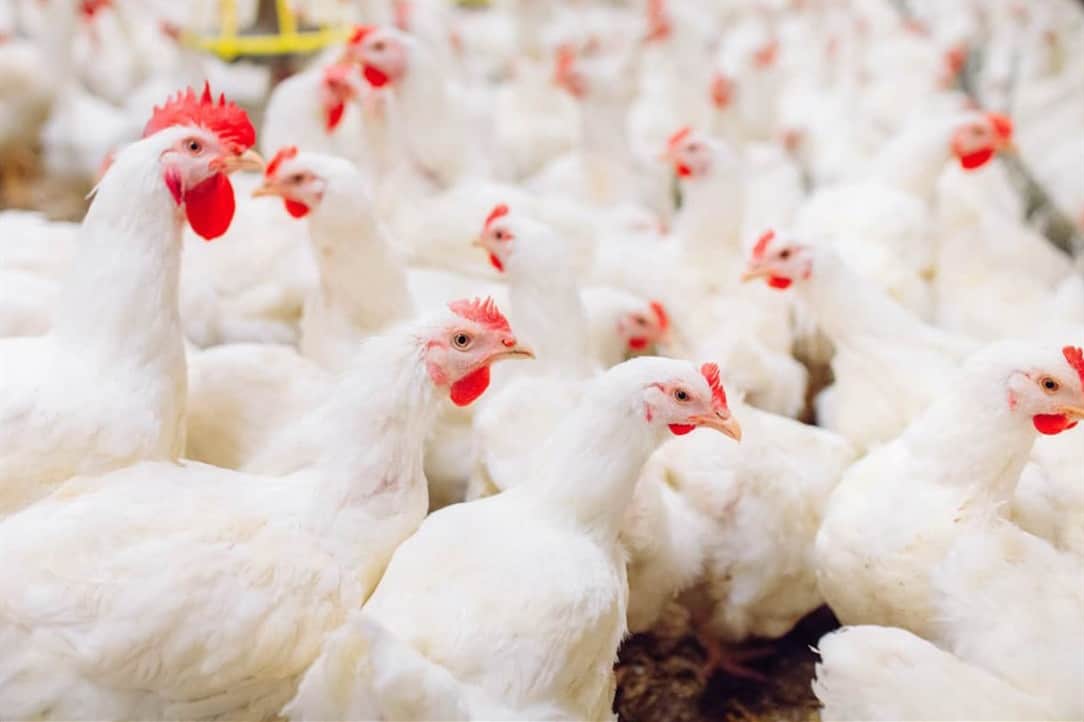
Incubated and hatched
Broiler chicks begin their lives in hatcheries, which incubate and hatch thousands of eggs. They never get to see their parents because they are kept in separate breeding facilities.
When chicks turn about a day old, they are placed on conveyor belts where they are vaccinated.
The conveyor belts next load them in shipping containers that are roughly the size of a large desk drawer. The crates are stacked on top of each other and loaded into a truck for transit to the grow-out farm, where the birds will spend much of their shortened lives.
Grown Up in the Farms
Broiler chickens are raised in large, open-structured houses. Here, they may roam, explore, eat, and socialize with other chickens. Depending on the farmer’s wish, some animals can have varying degrees of access to the outdoors.
Each chicken house contains approximately 25,000 birds. A broiler chicken takes around seven weeks to reach market weight, and after they’ve reached the required age and size, they’ll all be transported simultaneously to their next stop.
Transported to a Slaughterhouse
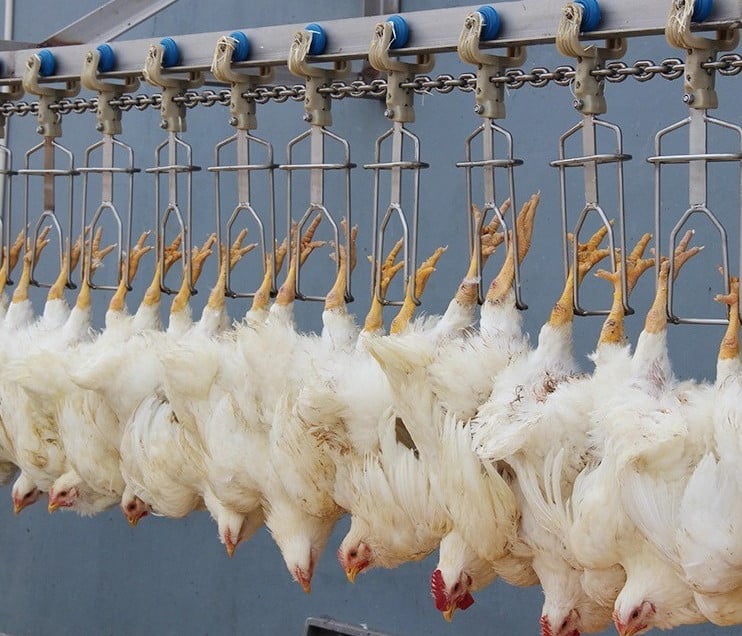
When broiler chickens reach market weight at approximately 47 days old, they are caught and placed into crates again for delivery, to a slaughterhouse this time.
In the slaughterhouse, broiler chickens are killed using a method called live-shackle slaughter. Although this manner of slaughter is extremely brutal and horrifying, it is the most popular in the United States. In this method, the chickens are hung with their legs in metal clamps upside down before they’re immersed into an electrifying water bath.
This is supposed to make them unconscious but sometimes fails, leaving the birds to endure their throats slit while still alive. They’re then transferred to a scalding tank, where they are plunged in boiling water, where some may suffer more.
Broiler Chicken Management
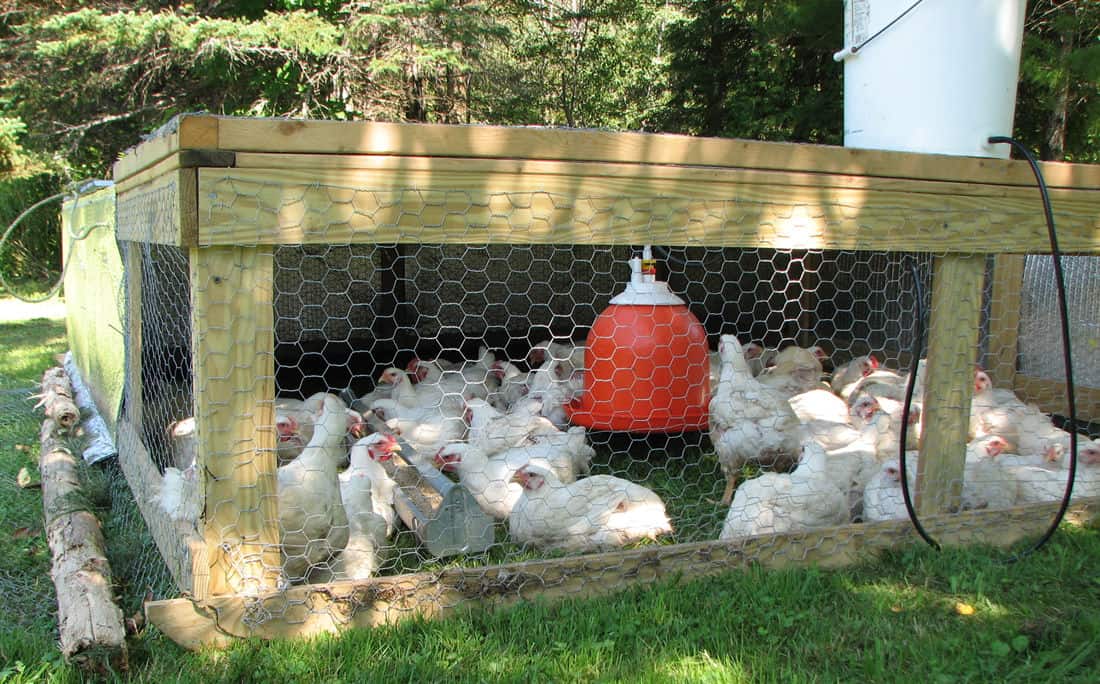
Conducive environment
To raise healthy and fast-growing broiler chickens, it is critical to have a clean, open place with sufficient space for roaming.
Broiler chicks, like most birds, are homoeothermic. This means they must keep their body temperature between 40 and 42°C.
Chicks can produce or lose heat above or below their thermoneutrality. However, they are still, unable to effectively adjust to a lower temperature. This is why it is critical to constantly monitor the environment, particularly the temperatures in various parts of the building.
Farmers must offer all of their animals the comfort they require for them to properly feed and drink. The proper temperatures must be maintained many hours before the arrival of the chicks.
Nutritional Requirements
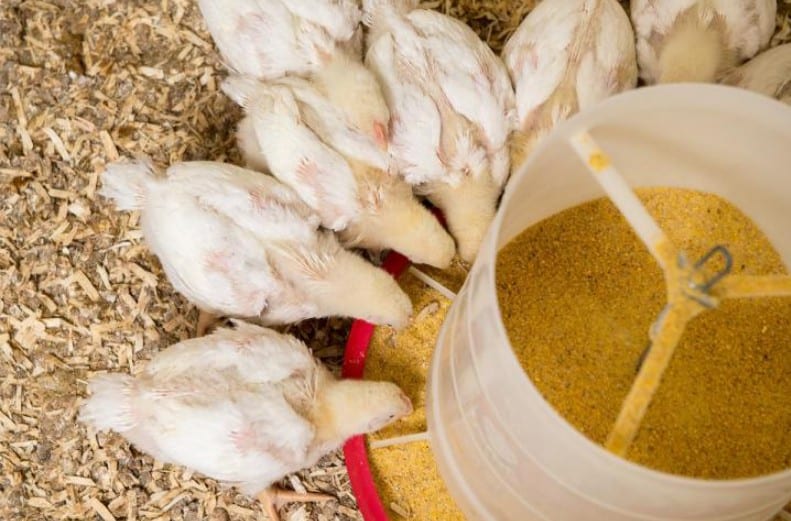
Nutrition is also important in ensuring that the chicks reach the proper size. The diet of broiler chickens must contain amino acids like methionine and lysine. These are amino acids that aid in the conversion of nutrients into meat.
Protein also aids the rapid growth of chickens. Vitamins A, B2, B12, D3, and K, as well as a low-fiber feed, are also required for broilers.
Because a chick’s body comprises around 80% water at hatching, excellent water quality is critical for maximum broiler performance. Remember, bird performance can be hampered by poor water quality.
It is also vital that all animals have access to water and food to avoid any competition. The distribution of feeders, the distance between the water and feeders, the volume of feed, and the number of animals per feeder should all be taken into consideration.
Waste Management
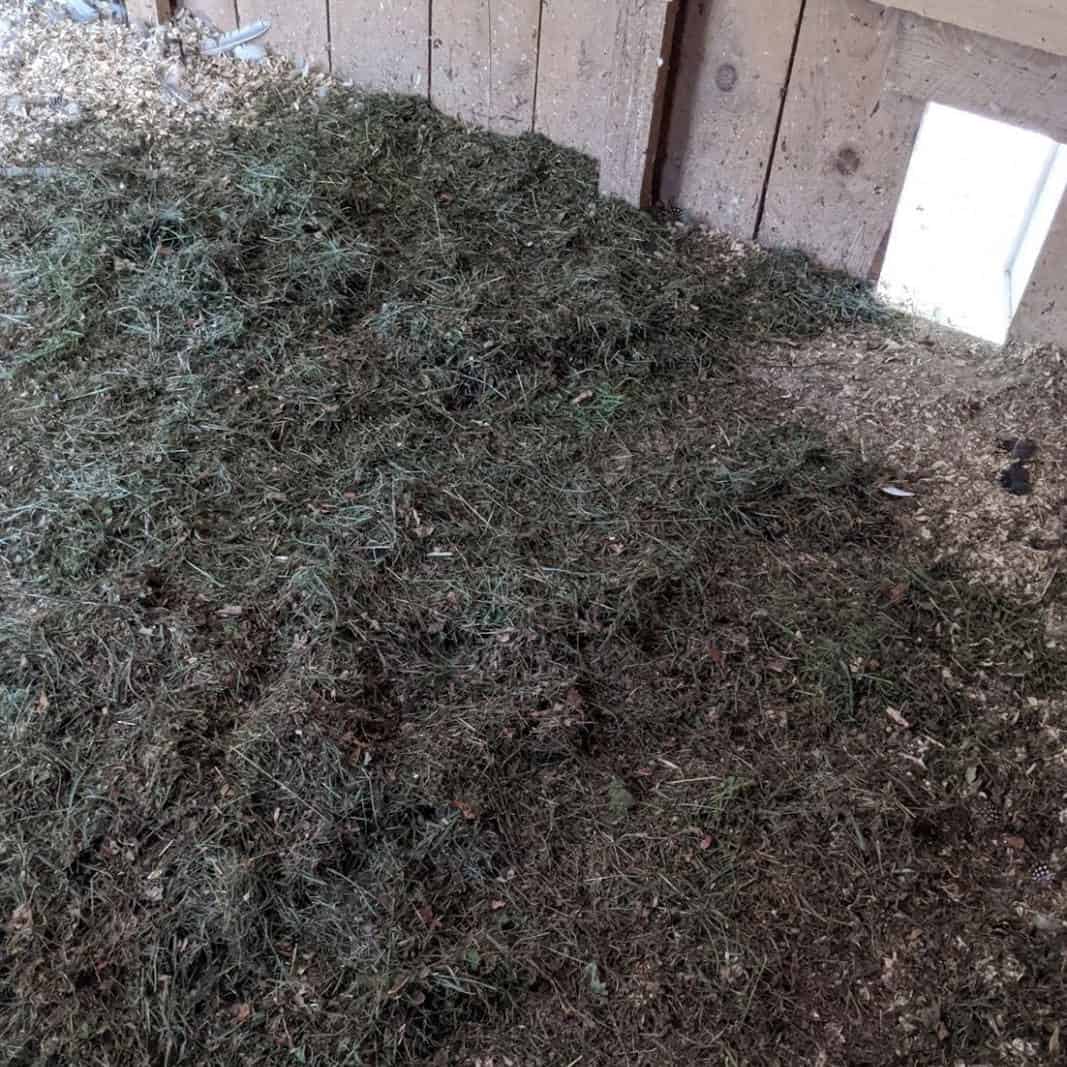
Litter management is important in ensuring the broilers’ welfare. Growers must use a method of disposal that is both environmentally safe and cost-effective.
A litter-storage method should be determined by the period of storage, the amount of litter produced, and the cost of input. Options include a covered stockpile, a stockpile with a ground liner, and a roofed storage building. The main objectives of broiler litter storage are to prevent nutrient runoff and leaching, as well as to reduce pest and odor concerns.
Health Issues
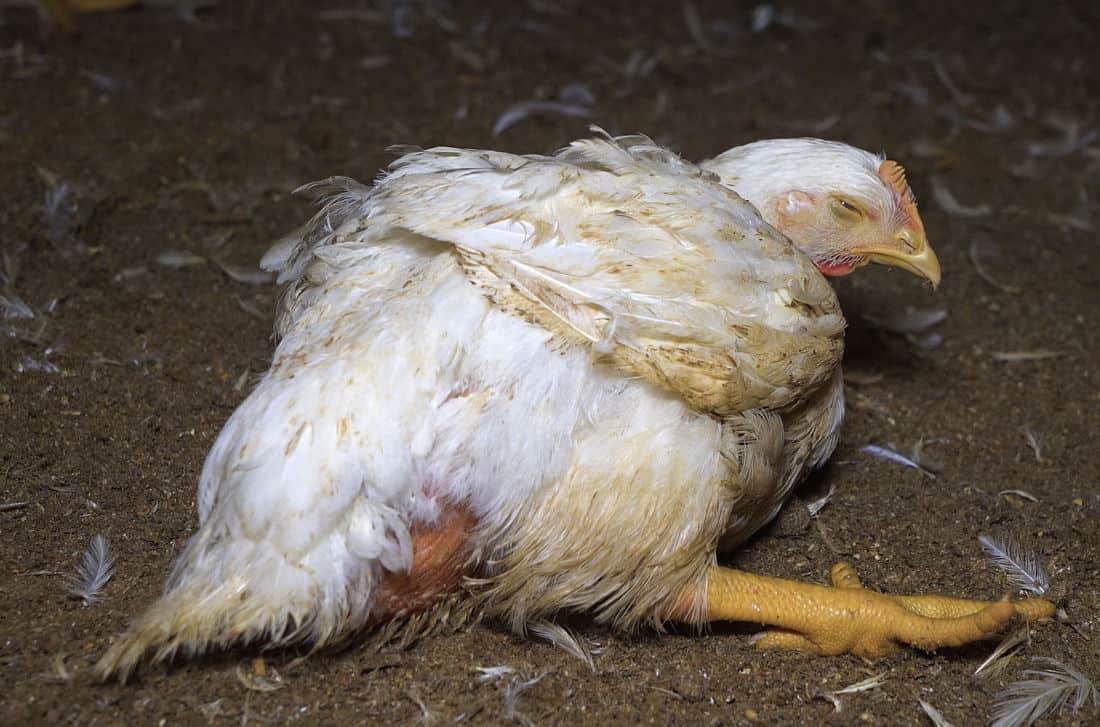
Cardiovascular dysfunction
The bodies of broiler chickens are frequently unable to maintain their rapid growth, resulting in heart failure. The most frequent cardiac diseases in traditional broiler flocks are sudden death syndrome and ascites syndrome.
These issues are mostly caused by rapid growth and selective breeding, as well as overeating, which is pushed by companies because larger birds bring in more money.
Skeletal dysfunction
The chicken’s body puts on more meat weight than the skeleton can support in rapid growth breeds, resulting in health issues such as angular bone abnormalities. These malformations appear in broilers as young as 6 days old, preventing them from reaching food or water, resulting in starving death.
Broiler chickens’ skeletal structures are likewise put under abnormal stress as a result of selective breeding for larger breasts. The added weight of breast muscles, combined with larger overall body weight, can impose strain on the legs, resulting in lameness and other skeletal issues.
Ocular Dysfunction

In broiler chickens, ammonia can cause serious eye problems. Contact with the substance for an extended period can cause corneal ulcers and tears, which can lead to infection and even blindness.
Integument Lesions
Integument lesions are painful lumps and sores caused by chickens coming into prolonged touch with their feces, which are high in ammonia. Breasts, feet, and hocks are the most common sites for lesions.
As a result of a lack of physical activity, integument lesions can also develop brought on by overcrowding. Chickens’ inability to walk around frequently leads to additional physical defects which limit their activity even more.
Environmental Issues

Ammonia
Ammonia is a poisonous gas produced by waste that can cause major diseases in both birds and farmworkers. When inhaled in high quantities, it can cause inflammation, disrupt metabolism, trigger cell death, and damage the cell’s power supply in the digestive tract.
Greenhouse Gas Emissions from Broiler Chicken Farming
Through the treatment of huge amounts of chicken feces, the broiler industry releases hazardous gases. Treatment and application of broiler manure to the soil can lead to significant emissions of carbon dioxide, ammonia, methane, and nitrous oxide.
Summary
By now, you should have a good understanding of what broiler chickens are. Since they’re mainly raised for meat production, much of their hardships are hidden from public view. To solve pressing issues in raising them, change is required. After all, broiler chickens are also deserving of a better life.
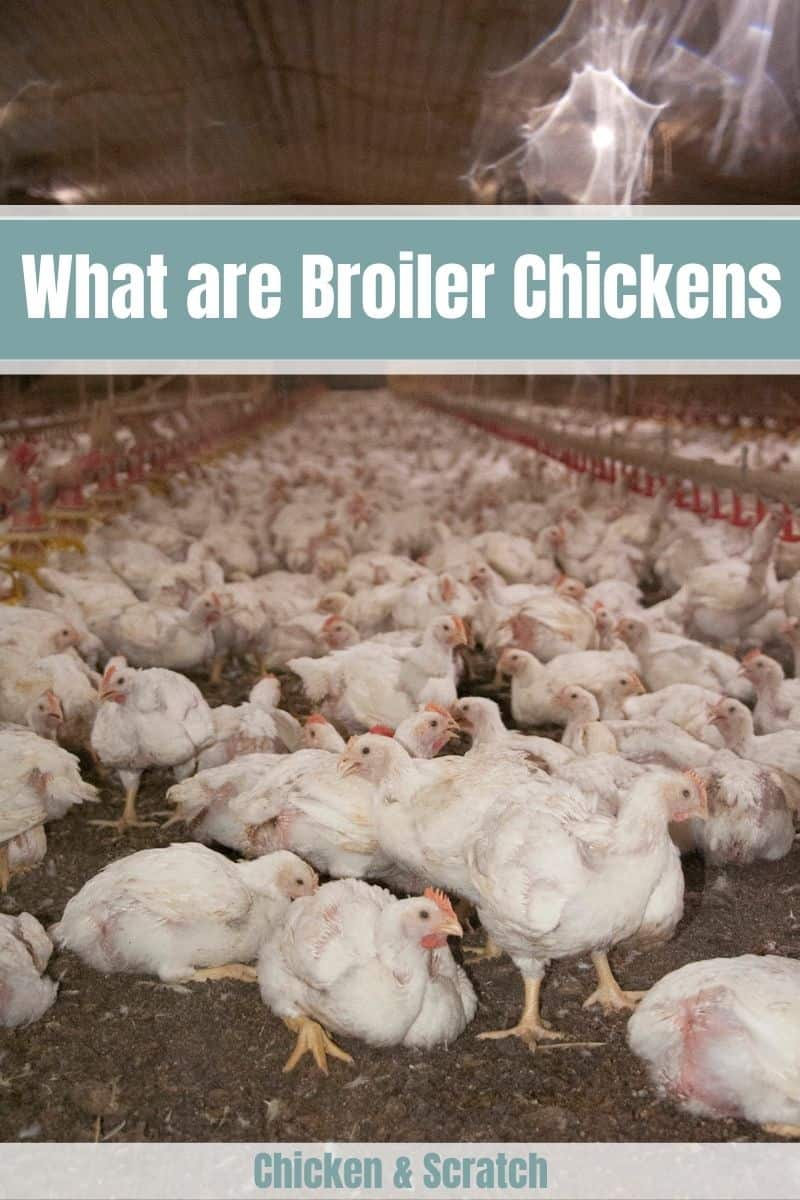

Joseph Hudson has been raising chickens for over 15 years. In 2018, he completed the Agriculture & Natural Resources program at Mt. San Antonio College. He currently raises over 1400 chickens on his 7.5-hectare farm. He keeps sharing his experience on raising healthy and happy chickens on Chicken Scratch The Foundry.
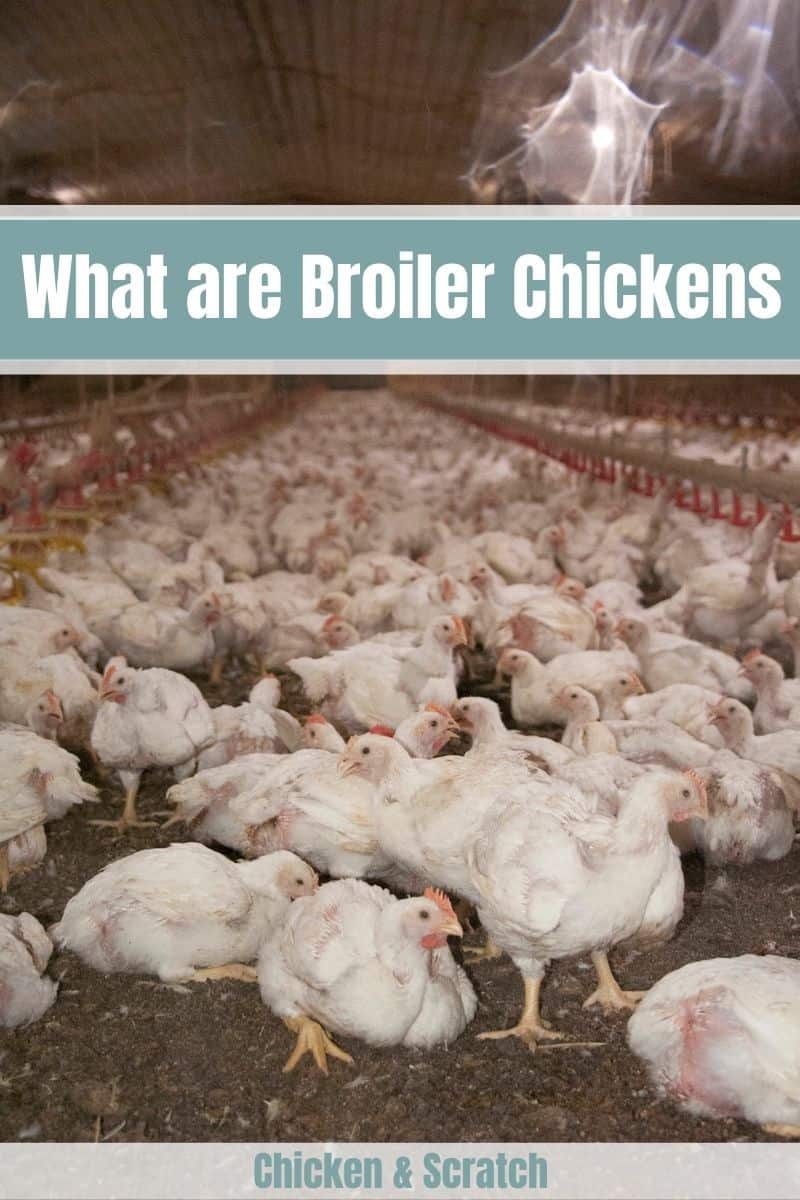







How i can create Broiler chicken or i need Broiler breeder chickens where i can buy?